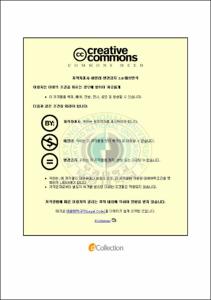우리나라 인구의 연령구조변화가 수산물의 소비에 미치는 영향
- Alternative Title
- Age Effects of Population on Seafood Consumption
- Abstract
- The demographic features have been proposed as an important factor for determining the quantity and quality of food consumption. The increase in population brings about the rise of food consumption, and the change of age groups leads to the change of food consumption pattern despite the same population scale. Not only consumption but also preference for food changes along with age. Therefore, the change of age groups in population becomes a crucial variable in explaining the changing food demand. When the food consumption pattern changes in quantity, the intake of carbohydrate foods gets reduced, whereas the consumption of protein and fatty food tend to increase.
The purpose of this study lies in analyzing the impact of price, income and age structure on the change in general food consumption patterns and their impact on sea food demands. The demand functions of fish, shellfish, sea weeds, rice, and livestock meat were estimated by auto/ridge regressions. The results showed that all own price elasticities have negative values, which are consistent with economic theories. Income elasticities except for shellfish turned out to be positive. Both of the price elasticity and the income elasticity of rice appeared to be lower than those of seafood and meat.
The population elasticities of fish by different ages appeared to be positive in the range of 40~59 and above 60, while the shellfish and seaweed elasticities were positive in above 60. This implies that the increase of population in the relevant age range influenced the increase of the amount of food consumption. As seen in the meat demand, it tended to increase in all age ranges, but the rice demand showed a decrease for the data period in the range of 40~59 but an increase in above 60.
The overall research results suggest that seafood is preferred by the elderly group population over other age population. With the increasing number of the elderly, the change of sea food and agricultural food consumption pattern appears to tends to be made elderly group-oriented. In developing a seafood production and supply, it seems crucial to make a accurate forecast for the food seafood demand, considering the population factors.
This research used only age group data because of very limited information on other population characteristics such as income, region, education and so on, that may have an important influence on the demand for seafood. Thus, such comprehensive analysis of including such demographic factors is left for further research in the future.
- Issued Date
- 2008
- Awarded Date
- 2008. 2
- Type
- Dissertation
- Publisher
- 부경대학교 대학원
- Alternative Author(s)
- Kim, Min-Ju
- Affiliation
- 부경대학교 대학원
- Department
- 대학원 해양산업경영학과
- Advisor
- 박성쾌
- Table Of Contents
- 제1장 서론 = 1
제1절 문제제기 및 연구목적 = 1
제2절 연구내용 및 방법 = 2
제2장 선행연구 검토 = 4
제1절 인구요인 = 4
제2절 수산물 수요함수 = 9
제3장 이론적 배경 = 14
제1절 수요이론 = 14
1. 수요의 결정요인 = 14
2. 수요 및 수요량 변화 = 17
제2절 식품경제이론 = 18
1. 식품의 상품적 특성 = 19
2. 식품수요의 특성 및 탄력성 = 21
3. 식품 소비패턴의 변화 = 25
제4장 수산물 소비 현황분석 = 28
제1절 인구의 연령구조 변화와 가구구성의 변화 = 28
1. 인구의 연령구조 변화 = 28
2. 가구구성의 변화 = 31
제2절 수산물 소비현황 = 35
1. 수산물 소비현황 = 35
2. 수산물 소비지출액 현황 = 37
제5장 실증분석 = 44
제1절 실증분석 모형 = 44
제2절 통계자료 = 46
제3절 추정방법 및 결과 = 47
1. 추정방법 = 47
2. 추정결과 = 51
제6장 결론 = 55
참고문헌 = 58
- Degree
- Master
- Files in This Item:
-
-
Download
 우리나라 인구의 연령구조변화가 수산물의 소비에 미치는 영향.pdf
기타 데이터 / 685.08 kB / Adobe PDF
우리나라 인구의 연령구조변화가 수산물의 소비에 미치는 영향.pdf
기타 데이터 / 685.08 kB / Adobe PDF
-
Items in Repository are protected by copyright, with all rights reserved, unless otherwise indicated.